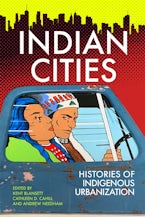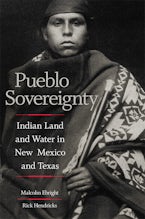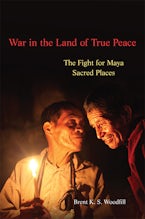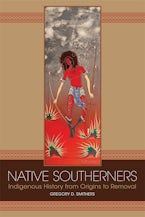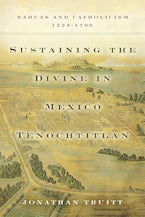HISTORY / Modern / 17th Century
Showing results 1-10 of 12
Filter Results OPEN +

Handmaid to Divinity
Natural Philosophy, Poetry, and Gender in Seventeenth-Century England
In Handmaid to Divinity, Desiree Hellegers establishes seventeenth-century poetry as a critical resource for understanding the debates about natural philosophy, astronomy, and medicine during the Scientific...
Lakhota
An Indigenous History
The Lakȟóta are among the best-known Native American peoples. In popular culture and even many scholarly works, they were once lumped together with others and called the Sioux. This book tells the full story of Lakȟóta culture and society, from their origins to the twenty-first century, drawing on Lakȟóta voices and perspectives.
The Stations of the Cross in Colonial Mexico
The Via crucis en mexicano by Fray Agustin de Vetancurt and the Spread of a Devotion
In Schwaller’s deft analysis—which extends from the origins of the devotion, to the processions and public rituals of the Mexica (Aztecs), to the text and illustrations of the Vetancurt manuscript—the Via crucis en mexicano opens a window on the practice and significance of the Stations of the Cross—and of private devotions generally—in Mexico, Hispanic America, and around the world.
Indian Cities
Histories of Indigenous Urbanization
All the contributions to this volume show how, from colonial times to the present day, Indigenous people have shaped and been shaped by urban spaces. Collectively they demonstrate that urban history and Indigenous history are incomplete without each other.
Pueblo Sovereignty
Indian Land and Water in New Mexico and Texas
Over five centuries of foreign rule—by Spain, Mexico, and the United States—Native American pueblos have confronted attacks on their sovereignty and encroachments on their land and water rights. How five New Mexico and Texas pueblos did this, in some cases multiple times, forms the history of cultural resilience and tenacity chronicled in Pueblo Sovereignty.
De Religione
Telling the Seventeenth-Century Jesuit Story in Huron to the Iroquois
De Religione, the longest-surviving text in the Huron, or Wendat, language, was written in the seventeenth century to explain the nature of Christianity to the Iroquois people, as well as to justify the Jesuits’ missionary work among American Indians. In this first annotated edition of De Religione, linguist and anthropologist John L. Steckley presents the original Huron text side by side with an English translation.
War in the Land of True Peace
The Fight for Maya Sacred Places
From early struggles to remove foreign influence to present-day battles over land tenure and indigenous-run ecotourism parks, this book documents a continuity in Maya culture over several thousand years—and illuminates the world view, with its sense of personhood and religion so different from the West’s, that informs this enduring culture.
Native Southerners
Indigenous History from Origins to Removal
As nuanced in detail as it is sweeping in scope, the narrative Gregory D. Smithers constructs is a testament to the storytelling and the living history that have informed the identities of Native Southerners to our day.
Sustaining the Divine in Mexico Tenochtitlan
Nahuas and Catholicism, 1523–1700
Truitt’s innovative use of previously neglected Nahua and Spanish documents sheds new light on indigenous life in New Spain, making Sustaining the Divine in Mexico Tenochtitlan an important contribution to a deeper understanding of the era.
Indians and the Political Economy of Colonial Central America, 1670–1810
The history of relations between the Spanish and the Indians of colonial Central America, often oversimplified as a story of unending Spanish abuse, forms a complicated tapestry of economics and politics. Robert W. Patch’s even-handed study of the repartimiento de mercancías—the commercial dealings between regional magistrates and the people under their jurisdiction—reveals the inner workings of colonialism in Central America.

Handmaid to Divinity
Natural Philosophy, Poetry, and Gender in Seventeenth-Century England
In Handmaid to Divinity, Desiree Hellegers establishes seventeenth-century poetry as a critical resource for understanding the debates about natural philosophy, astronomy, and medicine during the Scientific...
Lakhota
An Indigenous History
The Lakȟóta are among the best-known Native American peoples. In popular culture and even many scholarly works, they were once lumped together with others and called the Sioux. This book tells the full story of Lakȟóta culture and society, from their origins to the twenty-first century, drawing on Lakȟóta voices and perspectives.
The Stations of the Cross in Colonial Mexico
The Via crucis en mexicano by Fray Agustin de Vetancurt and the Spread of a Devotion
In Schwaller’s deft analysis—which extends from the origins of the devotion, to the processions and public rituals of the Mexica (Aztecs), to the text and illustrations of the Vetancurt manuscript—the Via crucis en mexicano opens a window on the practice and significance of the Stations of the Cross—and of private devotions generally—in Mexico, Hispanic America, and around the world.
Indian Cities
Histories of Indigenous Urbanization
All the contributions to this volume show how, from colonial times to the present day, Indigenous people have shaped and been shaped by urban spaces. Collectively they demonstrate that urban history and Indigenous history are incomplete without each other.
Pueblo Sovereignty
Indian Land and Water in New Mexico and Texas
Over five centuries of foreign rule—by Spain, Mexico, and the United States—Native American pueblos have confronted attacks on their sovereignty and encroachments on their land and water rights. How five New Mexico and Texas pueblos did this, in some cases multiple times, forms the history of cultural resilience and tenacity chronicled in Pueblo Sovereignty.
De Religione
Telling the Seventeenth-Century Jesuit Story in Huron to the Iroquois
De Religione, the longest-surviving text in the Huron, or Wendat, language, was written in the seventeenth century to explain the nature of Christianity to the Iroquois people, as well as to justify the Jesuits’ missionary work among American Indians. In this first annotated edition of De Religione, linguist and anthropologist John L. Steckley presents the original Huron text side by side with an English translation.
War in the Land of True Peace
The Fight for Maya Sacred Places
From early struggles to remove foreign influence to present-day battles over land tenure and indigenous-run ecotourism parks, this book documents a continuity in Maya culture over several thousand years—and illuminates the world view, with its sense of personhood and religion so different from the West’s, that informs this enduring culture.
Native Southerners
Indigenous History from Origins to Removal
As nuanced in detail as it is sweeping in scope, the narrative Gregory D. Smithers constructs is a testament to the storytelling and the living history that have informed the identities of Native Southerners to our day.
Sustaining the Divine in Mexico Tenochtitlan
Nahuas and Catholicism, 1523–1700
Truitt’s innovative use of previously neglected Nahua and Spanish documents sheds new light on indigenous life in New Spain, making Sustaining the Divine in Mexico Tenochtitlan an important contribution to a deeper understanding of the era.
Indians and the Political Economy of Colonial Central America, 1670–1810
The history of relations between the Spanish and the Indians of colonial Central America, often oversimplified as a story of unending Spanish abuse, forms a complicated tapestry of economics and politics. Robert W. Patch’s even-handed study of the repartimiento de mercancías—the commercial dealings between regional magistrates and the people under their jurisdiction—reveals the inner workings of colonialism in Central America.




